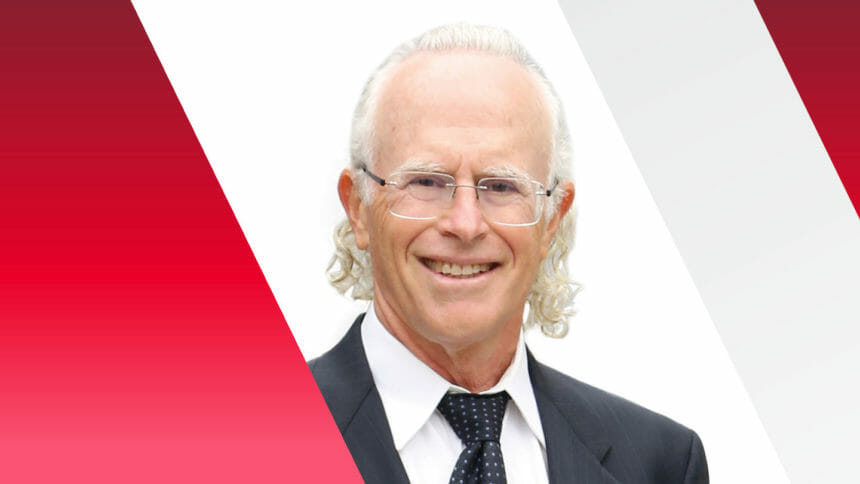
In February 2019, I wrote about the importance of fully engaging geriatricians and certified medical directors in the operations of nursing homes and chains. A month later, I shared my concern about a tsunami-like wave washing over the nursing home industry if the revised reimbursement for skilled nursing facilities, the Patient Driven Payment Model (PDPM), was primarily viewed through a revenue enhancement opportunity lens rather than an opportunity to improve the effective delivery of care.
I subsequently wrote about the importance of developing “leadership teams” that can successfully combine system and culture change. On March 11, 2020, I warned: “The nursing home industry will ask for waivers due to the possibility of not achieving minimum staffing levels. That’s the wrong direction. Inadequate staffing levels are not conducive to delivering quality care to the residents. Instead of asking for a reprieve, the industry needs to step up its game and make sure that there are enough staff to care for the residents that they serve.”
My position hasn’t changed. In fact, after over 200,000 nursing home resident deaths from COVID-19, my position is even stronger. It’s time for care solutions, not excuses.
A recent article focused on nonprofit nursing homes misses the reality that they are caught in the backdraft of the for-profit industry. They are faced with rising real estate costs and increasing costs of services driven by investors with aggressive revenue targets in a for-profit industry. Are taxpayer funds being spent for the purposes for which they are provided — high-quality services, supplies, labor and daily operations — or for other activities, i.e., costly leases and a variety of management fees? This is why transparency is of critical importance across the entire nursing home industry.
Nursing home industry criticism of the recent USA Today investigation into staffing reminds me of why I am willing to accept the moniker of being a critic of the “industry,” but not of the nursing home profession.
Complaints that the investigation was “unfair and mischaracterized” is nothing short of gaslighting, in disagreeing with the president’s call for establishing national standards for nursing home staffing. The White House is right to establish such standards — and many think they are long overdue.
Notably, in March, the California Association of Long Term Care Medicine (CALTCM) reiterated its support for minimum staffing levels. In June, CALTCM submitted a 100-page response to CMS’s RFI “Requirements for LTC Facilities to Establish Mandatory Minimum Staffing Levels.” That response was signed by 77 esteemed signatories, in addition to CALTCM and the National Hartford Center for Gerontological Nursing Excellence. As evidence for its conclusions, the document contained 417 references, including 110 separate studies supporting the findings.
Nursing home transformation should not be a PR battle fought with television ads and articles with soundbites. It’s about giving practitioners and staffers more control over the quality of services that they are asked to provide – and which families and elders count on us to provide. I’d be willing to meet Mark Parkinson anytime, anywhere, for an old-fashioned Lincoln-Douglas-style debate on the merits of establishing national staffing levels. I’m not alone.
The NASEM report, “The National Imperative to Improve Nursing Home Quality: Honoring Our Commitment to Residents, Families, and Staff,” made specific staffing recommendations. The report led to the funding of the Moving Forward Nursing Home Quality Coalition, which is working to develop specific recommendations to effectively bring about change. Aside from staffing is the concept of developing more small homes, recognizing that we need to create, at long last, a high-quality model of residential long-term care that we can all be proud of, and which will hold up under the scrutiny of transparency and oversight. Many industries and many sectors thrive on tough standards, from aviation to nuclear power.
Standing up a nursing home sector in the U.S. that is the envy of the world is not an impossible dream. In October of 2020 I wrote: “Nursing homes desperately need strong medical leadership in an engaged and competent medical director, actively involved director of nursing, 24/7 RN coverage and a full-time infection preventionist. If we are to effectively battle the scourge that is COVID-19, we can’t put this off any longer; the future is now. And surely our nursing home residents and staff are worth the efforts.”
That was just the beginning, and I am proud to be part of a bold reform movement that is aiming to shake things up from within and in partnership with policymakers, advocates, residents and their families, and experts who know how to get us from a problem-plagued sector to one that rewards those who are the best.
Recent protestations from the nursing home industry don’t hold up under scrutiny.
While many individual nursing home operations report that they lose money, I believe that is not the full picture. The large amount of funding invested by the federal government, and by states, on post-acute and long-term care results in certain individuals and related companies making lots of money. Investors purchasing nursing homes are not necessarily trying to make money by improving resident outcomes and quality of life, and investing in staff.
Instead, they are reorganizing nursing homes to sell off the real estate on which they sit, and to shift key aspects of care and operations to outside entities with whom they have ownership or financial ties. Thus, the facility’s basic operations and the quality of services provided are not the focus; rather, it’s the real estate and short-term profits returned by other disclosable parties.
Whenever the industry complains that oversight is too tough, we must remember there is ample reason for that. Performance must improve, and care must be the number one priority. Residents and care staff must come first, not the turning of profit. It’s time for solutions that put quality at the center of the nursing home sector — not excuses.
Michael Wasserman, M.D., CMD, is a board member and chairs the Public Policy Committee for the California Association for Long Term Care Medicine.
The opinions expressed in McKnight’s Long-Term Care News guest submissions are the author’s and are not necessarily those of McKnight’s Long-Term Care News or its editors.





